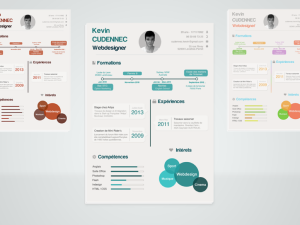When the world hit the pause button in the face of COVID-19, putting our client’s customer care programs on hold wasn’t an option. Days before lockdown became mandatory in the regions where we operate, we were in full swing making the move to a 95% work-at-home model for our entire business. Our mission was clear and concise: stay operational and deliver on our KPIs while keeping our people safe. The key, of course, was that everything, including agent training, had to pivot to a virtual environment.
Before the pandemic, we at Blue Ocean had conducted less than 10% of our frontline training in a fully remote model. It’s been a wild ride, but we successfully pivoted to 100% remote training for our operations.
Remote training represents a perfect storm of challenges that, if not mitigated, can serve to lengthen the training program, confuse both the trainers and the trainees, and ultimately cause major attrition down the line. (Trust us, we learned the hard way a few years ago when we first got into broadscale remote training for WAH agents!)
Virtual Training: Moving from Just “Getting It Done” to “Doing It Well”
For most of us, the success measure for the big 2020 pivot was simply staying operational. Getting training online was a success in itself. Now, as we roll toward 2021, training teams can focus on driving improvement. We are happy to share what we’ve learned and what’s working really well for us. And that begins with the three key pillars to successful remote agent training: preparation, expectations, and engagement.
Let’s talk preparation – the critical first step. Right off the bat, this will be a cross-functional effort. Your recruitment team will need to be a step ahead, making final hires at least a week earlier than usual to provide time for shipping equipment.
Tight communication between all stakeholders (trainers and trainees) and support functions (hello, IT, we’re looking at you here) is essential. Mitigation and risk planning are a big part of that, often requiring your tech team to be flexible and willing to drop everything. In a real-world classroom, when a trainee has tech trouble, they can slide over and share a screen with a classmate, or the trainer can set them up to seat ride on the production floor. In a virtual classroom, that same trainee is completely absent from the learning experience – representing a cost in both labor and learning opportunity. There is also a direct correlation between absence due to tech issues and early attrition which equals more bottom-line costs incurred from replacing the hire.
Preparation also includes the agents themselves – they benefit from proactive guidance to plan for and set up a distraction-free work area that supports engagement and sets them up for success. Our recruiting team does a “first day eve” call to each new hire to talk them through their jitters and answer any questions.
The second key pillar is setting expectations. In the remote environment, where more factors are outside of your control, trainers need to expect the unexpected – especially regarding potential technology issues. Even if the worst happens and their remote training environment comes crashing down around them, they must remain composed, unshakeable, and confident. They must know how and when to access resources and should be prepared to stay calm throughout the journey ahead. Communication is key. Ultimately, they’ll need to work harder and smarter in the remote classroom than they would in-person.
For agents going through training, you should set the expectation that this won’t be a passive experience. They will need to actively participate throughout the program in a variety of ways.
Finally, engagement is a key pillar in successful remote training. This is much easier to accomplish for in-person training, where you have control over the physical environment and can maintain physical interaction such as eye contact. In the virtual classroom, engagement is a whole new ball game.
At minimum, in addition to a video conferencing platform, to do remote training well, you also need a robust eLearning platform. Consider how the following functionalities can serve to engage participants:
- Whiteboard
- Simulations
- Game-based learning
- Screen sharing
- Non-verbal feedback (emoticons, etc.)
- Quizzing
- Breakout sessions
- Timed activities
You need to strike the right balance between driving high engagement and genuine knowledge transfer without confusing and distracting trainees by bombarding them. This is where a skilled trainer is invaluable. Regular ice breaker, quick hit quizzes and polls, and role-playing activities are powerful training techniques. Visually appealing content is also a must – consider more visuals, captivating graphics, and less text. Trainers should use these elements together to keep high energy levels and encourage proactive participation.
In our world, we break all of our training plans down into ten-minute segments – no matter how long the overall training is. We know from experience that in a remote world, trainees need a break from lecture-centric learning every ten minutes. That means sprinkling those short polls, quick questions, asking for responses, etc. Death by PowerPoint is even more likely in a remote setting – keeping trainees on their toes and engaged by involving them in an action is essential.
Our best practice also includes leveraging timed activities. Using a countdown clock while agents complete tasks and assessments can encourage efficiency while also mirroring the stress that an agent can experience to meet productivity goals in production. While we never want agents to compromise the customer experience for the sake of efficiency, we also firmly believe that an expeditious route to a resolution results in a positive customer experience. When agents get a sense of satisfaction from efficiency and can learn to deal with time pressures in training, they will be set up for success before they even take their first call or chat.
Additionally, role play is a significant value-add activity in training. Role play takes many different forms in our training – from mock calls to two trainees running through side-by-side scenarios together. Finding a way to translate that learning activity to the virtual world will give your trainees a real boost in feeling prepared for that first phone call from a live customer. Our goal is that each trainee will feel the anxiety of taking a live call in the safety and security of training, knowing that the safety net is there. By creating that feeling through mock calls, the trainee has the chance to work through their nerves without exposing a “real” customer to their first anxious efforts.
Making Virtual Agent Training Work for You
As we continue to navigate an uncertain world and unfolding impacts of the pandemic, it can be easy to speed through the planning of your remote training program and make assumptions about its similarities to in-person training. We have also heard experts in the field say that remote training will by its very nature take longer than brick and mortar training. We’re here to tell you it doesn’t have to be that way. In our move to fully remote training, we have not added any length to our training programs nor have we compromised outcomes. We are hitting the same average scores on every KPI for our training programs in our virtual classrooms as we were in our brick and mortar classrooms.
Preparation, expectations, and engagement are the cornerstones of a positive and successful virtual classroom. Done right, you’ll avoid increasing training time while simultaneously sustaining high graduation rates and reported agent preparedness.
Business & Finance Articles on Business 2 Community
(12)






